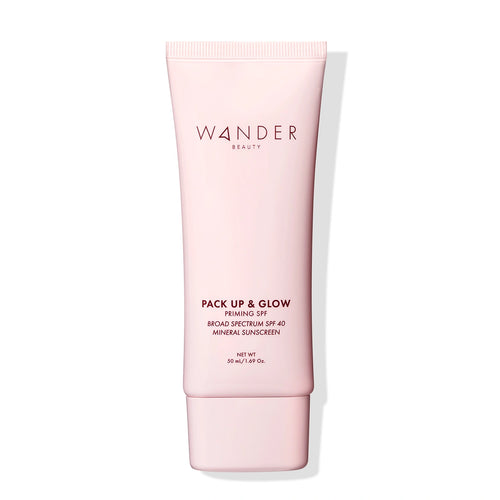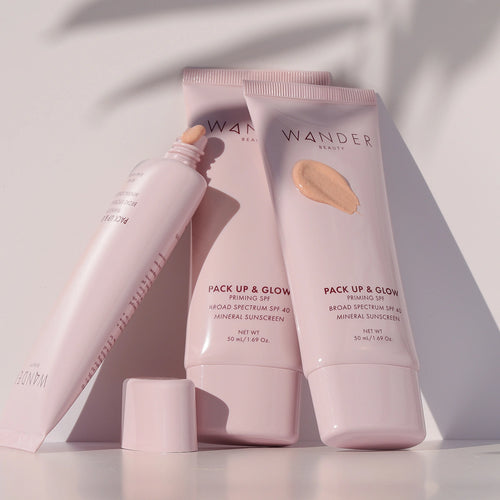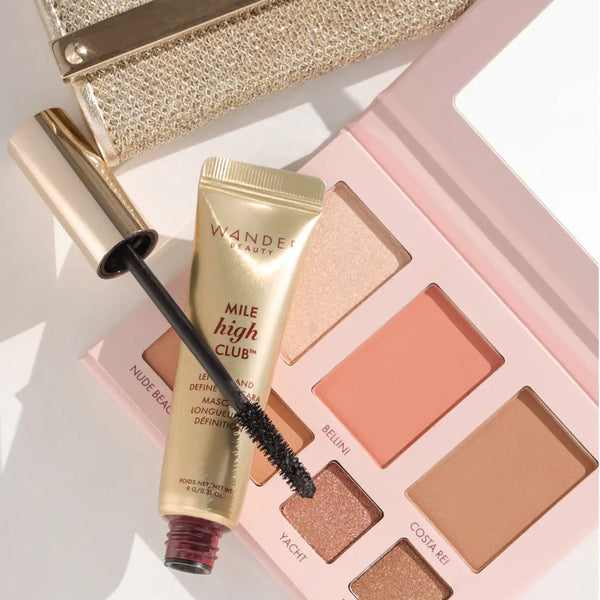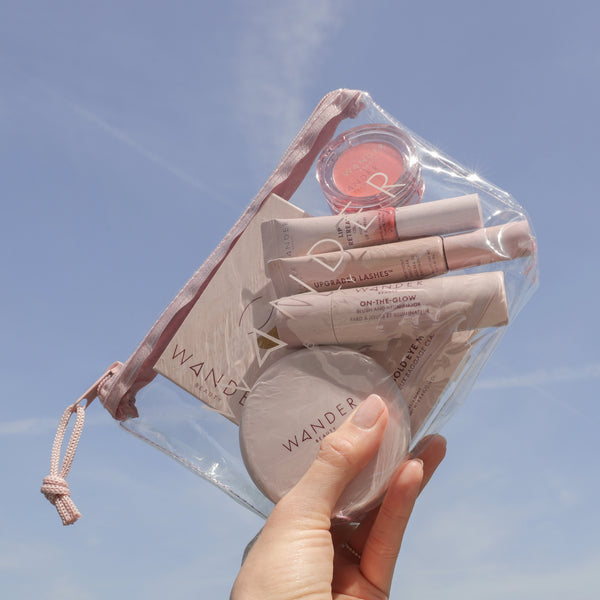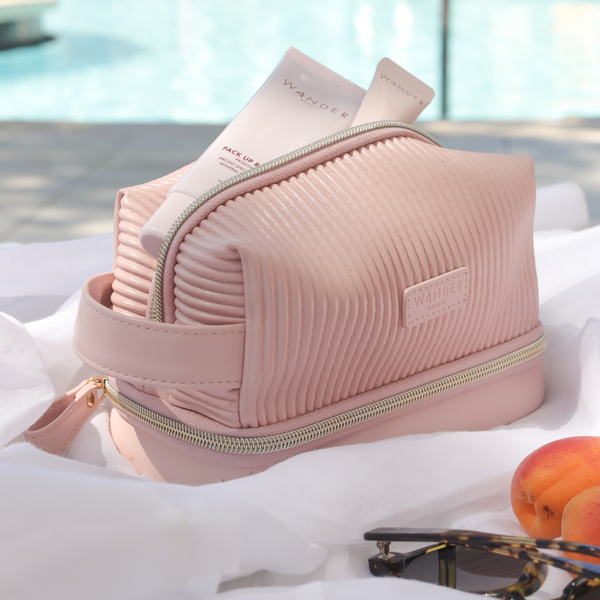Understanding how SPF works
By Wander Beauty | Aug 22, 2022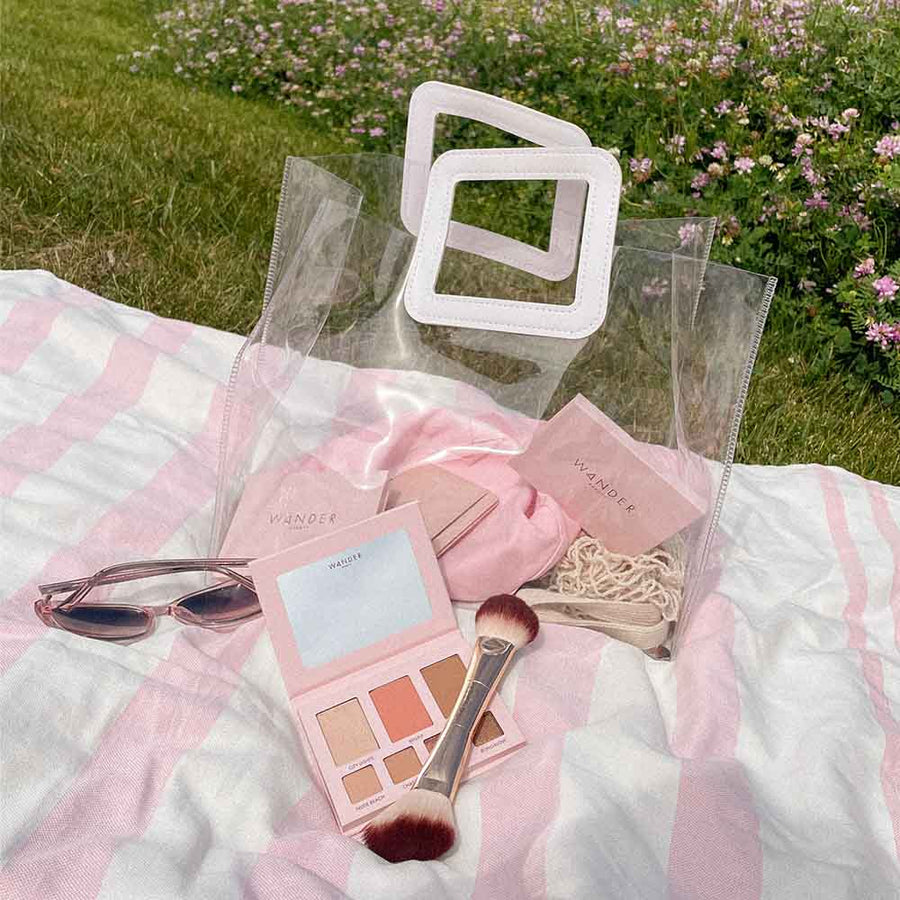
We all know the importance of wearing sunscreen to protect our skin from the potentially damaging effects of the sun, as well as to reduce the visible signs of aging. Even so, knowing the importance of wearing either a chemical or mineral sunscreen daily doesn’t always mean we understand how it works and, consequently, how to use it best. In a separate blog post, we unpack what the difference between mineral and chemical sunscreen is, if you'd like to know more.
Join us as we take an illuminating dive into your most pressing questions about body and face sunscreen, SPF meaning, and more.
How SPF works
SPF stands for “sun protection factor,” and the acronym is always followed by a number (such as 15, 30, or 50). It’s a rating that measures how much protection a product provides when applied liberally to the skin. The factor quoted indicates how long it would take for the sun’s UVB rays to damage the skin when wearing the product versus not. For example, if you applied SPF 30 to your skin, it would take 30 times longer for it to burn than if you went into the sun wearing no sun protection whatsoever.
It’s important to note that UVA protection, which is measured on a different scale, has no relation to SPF. This makes it important to look for a sunscreen labeled “broad spectrum” to protect your skin from both UVB and UVA rays.
Understanding UVB and UVA
The sun emits invisible ultraviolet radiation that can damage unprotected skin when reaching Earth, both on sunny and cloudy days. These rays are known as ultraviolet A and ultraviolet B. UVB rays affect the skin’s surface and cause sunburn and visible damage such as skin redness, whereas UVA rays penetrate into the deeper layers of the skin, destroying vital supportive substances your skin needs to appear youthful and healthy. The shorter wavelengths of UVA can also result in painful sunburns, and both types of ultraviolet light play a role in causing skin cancer.
UVB rays are most intense between the hours of 10 am and 4 pm, when the sun is at its highest. UVA rays, on the other hand, are present all day long at a consistent intensity and can even penetrate glass, including car, home, and office windows (unless they have a UV-protective coating). This is why it’s important to apply sunscreen every single day of the year, no matter the weather, season, or location.
How effective is SPF?
Because SPF testing is done in controlled environments rather than fluctuating real-life settings, the accuracy of ratings is somewhat limited. The general results based on regulated testing are as follows:
- SPF 15 shields skin from 93% of UVB rays
- SPF 30 shields skin from 97% of UVB rays
- SPF 50 shields skin from 98% of UVB rays
- SPF 100 shields skin from 99% of UVB rays
This means:
- SPF 30 lets about 3% (just under 1/30th) of UVB rays through
- SPF 50 lets about 2% (1/50th) of UVB rays through
For this purpose, experts recommend a minimum SPF of 30 for daily use, while the best sunscreen for those with fair or sensitive skin would ideally have a higher SPF rating.
How long does SPF last?
The sun protection factor on sunscreens is influenced by the intensity of UVB in your location, as well as factors such as cloud coverage, latitude, season, and proximity to reflective surfaces such as water and sand. As such, it’s impossible to determine exactly how long a face cream with SPF, for example, would effectively protect your skin.
When choosing the best SPF for your face, you need to consider your environment and how easily your skin burns. As a general rule, experts recommend applying sunscreen every two hours, especially when outdoors and after swimming or sweating. If you work indoors and don’t sit near a window, you could get away with less frequent applications, but be sure to factor in commuting and err on the side of caution.
How to choose the best SPF for your face and skin type
To choose an SPF rating suited to your skin type, you need to know how long it takes for your skin to change color when exposed to UV light without sun protection. Those with more sensitive skin would be best with a higher SPF, whereas those who rarely experience sunburn can get away with a lower SPF rating. Even so, it’s best not to go lower than SPF 30.
Many people opt for a face moisturizer with SPF. This makes it easier to ensure you are applying sunscreen every morning, as few people skip moisturizing after cleansing. Other options include foundations or primers with a built-in SPF, such as the Pack Up & Glow Priming Mineral SPF 40, a combination formula that both protects your skin and primes it for makeup application. Ultimately, the best face and body sunscreen is the one that you’ll apply every day.
When and how to apply sunscreen
Whatever you're using, sunscreen should be used as the last step of your skincare routine, before applying makeup, and then reapplied regularly throughout the day. A lightweight, sheer formula will make this process easy and mess-free. Be sure to apply sunscreen to all exposed areas of your body, including your ears, hands, and feet, where applicable. SPF ratings in clinical settings use a liberal amount of sunscreen applied equally to all exposed areas, so to get the full benefit of your SPF, don’t skimp on the product! When it’s time to reapply, Pack Up & Glow Priming Mineral SPF 40, applied with our Wander Cushion, is perfect and can be applied over makeup.<product>1,2</product>
Care for your skin with Wander Beauty
Wander Beauty makeup and skincare products contain clean, effective, skin-loving ingredients. Not only are we certified by Leaping Bunny, which ensures that all our products are 100% cruelty-free. We also guarantee that our products are free of parabens, phthalates, sodium lauryl sulfate (SLS), sodium laureth sulfate (SLES), synthetic fragrances, and more.
Understanding how SPF works
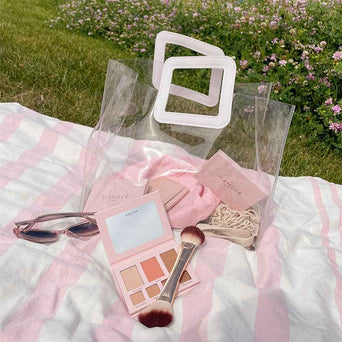
We all know the importance of wearing sunscreen to protect our skin from the potentially damaging effects of the sun, as well as to reduce the visible signs of aging. Even so, knowing the importance of wearing either a chemical or mineral sunscreen daily doesn’t always mean we understand how it works and, consequently, how to use it best. In a separate blog post, we unpack what the difference between mineral and chemical sunscreen is, if you'd like to know more.
Join us as we take an illuminating dive into your most pressing questions about body and face sunscreen, SPF meaning, and more.
How SPF works
SPF stands for “sun protection factor,” and the acronym is always followed by a number (such as 15, 30, or 50). It’s a rating that measures how much protection a product provides when applied liberally to the skin. The factor quoted indicates how long it would take for the sun’s UVB rays to damage the skin when wearing the product versus not. For example, if you applied SPF 30 to your skin, it would take 30 times longer for it to burn than if you went into the sun wearing no sun protection whatsoever.
It’s important to note that UVA protection, which is measured on a different scale, has no relation to SPF. This makes it important to look for a sunscreen labeled “broad spectrum” to protect your skin from both UVB and UVA rays.
Understanding UVB and UVA
The sun emits invisible ultraviolet radiation that can damage unprotected skin when reaching Earth, both on sunny and cloudy days. These rays are known as ultraviolet A and ultraviolet B. UVB rays affect the skin’s surface and cause sunburn and visible damage such as skin redness, whereas UVA rays penetrate into the deeper layers of the skin, destroying vital supportive substances your skin needs to appear youthful and healthy. The shorter wavelengths of UVA can also result in painful sunburns, and both types of ultraviolet light play a role in causing skin cancer.
UVB rays are most intense between the hours of 10 am and 4 pm, when the sun is at its highest. UVA rays, on the other hand, are present all day long at a consistent intensity and can even penetrate glass, including car, home, and office windows (unless they have a UV-protective coating). This is why it’s important to apply sunscreen every single day of the year, no matter the weather, season, or location.
How effective is SPF?
Because SPF testing is done in controlled environments rather than fluctuating real-life settings, the accuracy of ratings is somewhat limited. The general results based on regulated testing are as follows:
- SPF 15 shields skin from 93% of UVB rays
- SPF 30 shields skin from 97% of UVB rays
- SPF 50 shields skin from 98% of UVB rays
- SPF 100 shields skin from 99% of UVB rays
This means:
- SPF 30 lets about 3% (just under 1/30th) of UVB rays through
- SPF 50 lets about 2% (1/50th) of UVB rays through
For this purpose, experts recommend a minimum SPF of 30 for daily use, while the best sunscreen for those with fair or sensitive skin would ideally have a higher SPF rating.
How long does SPF last?
The sun protection factor on sunscreens is influenced by the intensity of UVB in your location, as well as factors such as cloud coverage, latitude, season, and proximity to reflective surfaces such as water and sand. As such, it’s impossible to determine exactly how long a face cream with SPF, for example, would effectively protect your skin.
When choosing the best SPF for your face, you need to consider your environment and how easily your skin burns. As a general rule, experts recommend applying sunscreen every two hours, especially when outdoors and after swimming or sweating. If you work indoors and don’t sit near a window, you could get away with less frequent applications, but be sure to factor in commuting and err on the side of caution.
How to choose the best SPF for your face and skin type
To choose an SPF rating suited to your skin type, you need to know how long it takes for your skin to change color when exposed to UV light without sun protection. Those with more sensitive skin would be best with a higher SPF, whereas those who rarely experience sunburn can get away with a lower SPF rating. Even so, it’s best not to go lower than SPF 30.
Many people opt for a face moisturizer with SPF. This makes it easier to ensure you are applying sunscreen every morning, as few people skip moisturizing after cleansing. Other options include foundations or primers with a built-in SPF, such as the Pack Up & Glow Priming Mineral SPF 40, a combination formula that both protects your skin and primes it for makeup application. Ultimately, the best face and body sunscreen is the one that you’ll apply every day.
When and how to apply sunscreen
Whatever you're using, sunscreen should be used as the last step of your skincare routine, before applying makeup, and then reapplied regularly throughout the day. A lightweight, sheer formula will make this process easy and mess-free. Be sure to apply sunscreen to all exposed areas of your body, including your ears, hands, and feet, where applicable. SPF ratings in clinical settings use a liberal amount of sunscreen applied equally to all exposed areas, so to get the full benefit of your SPF, don’t skimp on the product! When it’s time to reapply, Pack Up & Glow Priming Mineral SPF 40, applied with our Wander Cushion, is perfect and can be applied over makeup.<product>1,2</product>
Care for your skin with Wander Beauty
Wander Beauty makeup and skincare products contain clean, effective, skin-loving ingredients. Not only are we certified by Leaping Bunny, which ensures that all our products are 100% cruelty-free. We also guarantee that our products are free of parabens, phthalates, sodium lauryl sulfate (SLS), sodium laureth sulfate (SLES), synthetic fragrances, and more.



